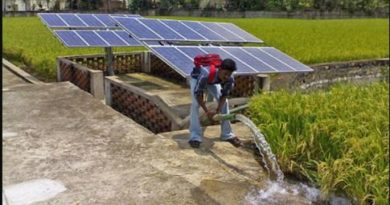World Refrigeration Day Today, A Day Well Earned

As the cooling industry celebrates World Refrigeration Day today, it’s a good time to appreciate just why the industry has been the focus of attention in the past few years. With the spotlight only going to get stronger as we roll along.
From India’s cooling plan , to global cooling prizes , to World Bank funded solutions for sustainable cooling, the focus on making cooling energy efficient has been intense.
Firms like Emerson, Danfoss and many more have linked their future to the innovations they can drive in what is also termed the HVAC industry. For Ravichandran Purushothaman, President Danfoss Industries Pvt Ltd (India Region), it’s a time to consider just how vital energy efficiency here is.
“Today, the business of refrigeration and HVAC makes a significant contribution to the comfort, safety, and health of the citizens around the world. There is a wider consensus on cooling as a developmental need as it is linked with achieving several Sustainable Development Goals as defined by the UN.
While the Indian cold-chain sector represents a small portion of the aggregated cooling demand, it is poised for strong growth, with significant implications for improving food security and doubling farmer incomes. In India, refrigeration has the potential to be a strong partner industry in addressing the nutritional deficits across all strata of society and creating a roadmap to achieve global sustainability targets.
A strong cold chain network supported by a robust refrigeration platform can be transformational for the agriculture sector by limiting food loss and thereby saving livelihoods of the farming community. Mitigating food losses also enables the efficient delivery of high-quality food and produce across the population, thereby bridging the persistent nutrition gap in India. Similarly, the contributions of a well-developed cold chain network to the pharmaceutical industry are manifold, especially in the current scenario – where the importance of the refrigeration industry is further highlighted.”
Interestingly, the Covid-19 pandemic, which has prevented a broader celebration and understanding of the day in India and worldwide possibly, has also underlined just how vital something as basic as cold chains are today. Without a network of those helping to preserve vital support equipment and materials , fighting the pandemic would probably have been even tougher for a stretched healthcare system here.
Similarly, as the third largest consumer of energy today, India is one of the few countries still on a growth trajectory, when it comes to its energy requirements. In fact, we might take on the mantle of global leadership as far as incremental energy consumption goes. A lot of that consumption will be towards cooling needs of its people, from air conditioning, to cold chains for produce, to more energy efficient ways of preventing losses due to heat etc.
Every incremental efficiency gain, or major innovation, has the potential to make a game changing impact on the global movement to reduce carbon emissions. Nowhere else more so, that in India.
CFC’s (chlorofluorocarbon gases) which have finally come close to a complete ban worldwide after intense effort over decades, are just one example of the damage that can be caused by the wrong choice or forced use of technologies that are unsustainable.
Because cooling today is almost as important as the most basic needs like food and water, and denying it is simply not possible. Which will ensure that in the coming future, the vital role of this sector will only get more critical.




